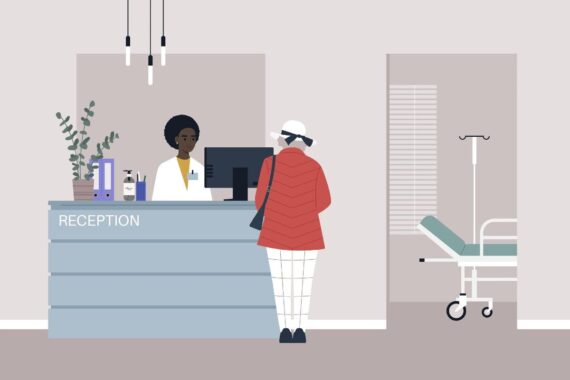Practice manager Mike Neville looks at how effectively utilising care navigation can enhance patient experience
In the first article of this series, making the most of Pharmacy First, I wrote that practice teams will have been trained in spotting red flag symptoms in patients when they make contact with the practice. These red flag symptoms indicate that the patient would be better treated by being navigated to A&E. The Pharmacy First scheme should be seen as an extension of that navigation process, with patients being directed to another, more appropriate, service.
However, this is only part of a practice’s care navigation arsenal. Whether or not practices choose to have some sort of care navigation is no longer the question. But how each practice chooses to apply care navigation, and to what extent, is.
Below are a few tips for practices to consider when looking at how they can harness the power of care navigation to enhance patient care and wellbeing.
Utilise national campaigns
Earlier this month, the Institute of General Practice Management released their latest campaign #RightCareFirstTime. It is an eloquent resource for both practices and patients – educating the latter that it is not always the GP that they need to see for a health problem. Pharmacy First also has resources for practices to use to raise awareness of the service and promote it to patients.
Patients should not view care navigation as a negative; but a positive. With care navigation in place, they may be seen faster and not need multiple appointments for their health needs.
Forge strong partnerships
Practices should cultivate strong partnerships with pharmacies, community organisations, and healthcare providers. By collaborating closely with such allies, practice teams can access a wealth of resources and support to aid care navigation efforts.
Empower patients
Practices must empower patients to take an active role in their own healthcare journeys. Educating patients about available resources, treatment options, and self-management techniques will allow them to make informed decisions and navigate the healthcare system with confidence.
As I noted in my Pharmacist First article, this extends to working with your patient participation group (PPG). Have discussions with them – not just about what the message to patients is – but also how it is said. These conversations will reach patients in a way that they will be more inclined to listen, and therefore take the message on board about why such processes are in place.
Utilise technology wisely
In today’s digital age, technology serves as a powerful tool for navigating the complexities of healthcare. Practices can leverage electronic health records (EHRs), telemedicine platforms, and mobile apps (the NHS app, or messaging applications such as AccuRx) to streamline communication, coordinate care, and track patient progress more effectively.
Practices should also consider whether true AI platforms could play a part for your practice to assess capacity and demand for your patient population need.
These tools are not only a way for you to streamline business processes, but also an opportunity to reinforce that the care navigation team are simply following the clinician’s instructions over who the patient should see. This might mean that the era of your team being viewed as the gatekeeper by patients could be over!
Tailor care plans
Practices should gearcare plans to meet the unique needs and preferences of each patient. By taking a personalised approach to care navigation, practice teams can enhance patient engagement and improve health outcomes.
Promote continuity of care
Continuity of care is the guiding principle that ensures patients stay on course. Practice teams must prioritise continuity of care by facilitating seamless transitions between healthcare providers, coordinating follow-up appointments, and providing ongoing support to patients.
Embrace a multidisciplinary approach
Practice teams benefit from a multidisciplinary approach to care navigation. By harnessing the expertise of physicians, nurses, pharmacists, social workers, and other healthcare professionals, teams can address the complex needs of patients more comprehensively.
Monitor and adapt
Successful navigation requires constant vigilance and adaptability. Practice teams must continuously monitor patient progress, reassess care plans, and adjust their course as needed, to ensure patients stay on track to achieve their healthcare goals.
You will never get the process 100% correct the first time. And even if you do, you will not remain at 100% right forever! There will always be new ways to adjust your process – always be open to change.
Concluding thoughts…
The journey of care navigation requires skill, compassion, and dedication.
It may be that due to the latest contract that NHSE has imposed on general practice, practices may not be able to reach the full potential of care navigation. Serious changes to how general practice is both funded and appreciated are needed in order to allow care navigation to be better facilitated.
That being said, with the end point of care navigation being such that demand can be channelled for the benefit of both practices as well as patients, it is certainly an area that all practices need to invest in from a cost-benefit perspective, as well as patient experience.
Mike Neville is a Managing Partner in Manchester and is the Institute of General Practice Management’s national lead for England North


















Care Navigation is what GPs are expert in. These articles seem to be focussing on Care Diversion.
Red Flags do not necessitate diversion to A&E. They necessitate prompt full assessment by an appropriately trained Medical Practitioner.
David, this is general practice, you’re a Dr? You’re too expensive you don’t belong here. Hadn’t you heard? You guys work in A&E now. In your bike